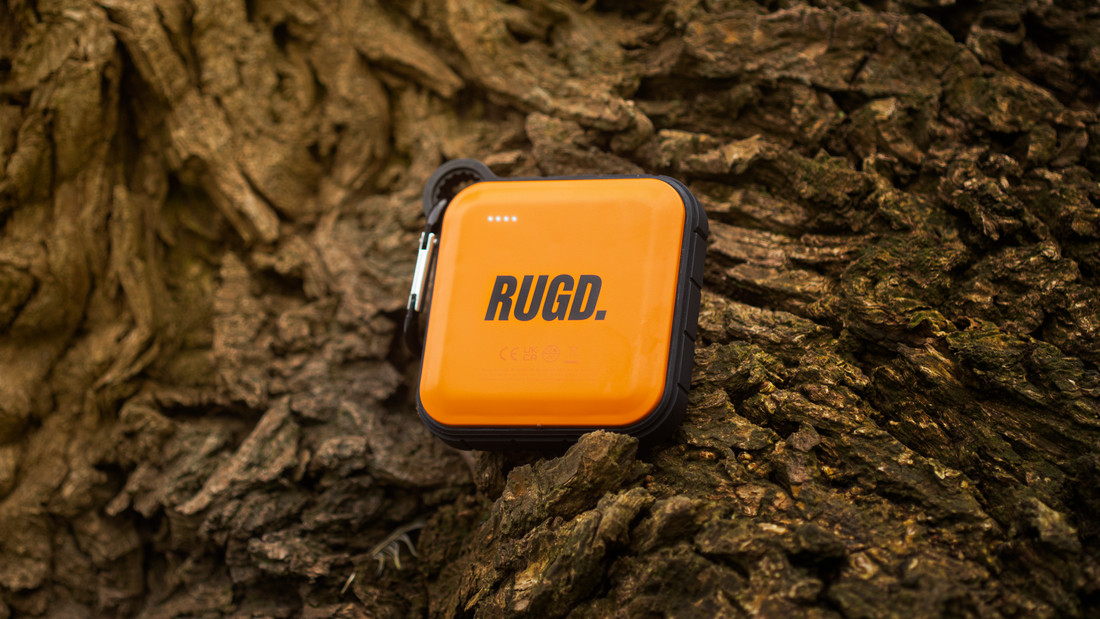
Why Every Outdoor Enthusiast Needs a Recyclable Power Bank
Share
As an outdoor enthusiast, you’ve probably faced the frustration of running out of power mid-hike or during a camping trip. Let’s explore why switching to a recyclable power bank is not only convenient but also environmentally friendly.
What is a Recyclable Power Bank?
A recyclable power bank is a portable energy storage device designed for sustainability. Unlike traditional power banks, which are often made from non-renewable materials, recyclable power banks can be reused and recycled at the end of their life cycle, minimising electronic waste.
The Problem with Traditional Power Banks
Traditional power banks are typically made from materials like plastic and metal, which can take hundreds of years to decompose. Once these power banks reach the end of their life cycle, they often end up in landfills, contributing to the growing e-waste crisis.
The Benefits of Recyclable Power Banks
Recyclable power banks, like the RUGD Power Brick, are crafted from sustainable materials such as bioplastics and recycled metals. They not only reduce environmental impact but are also built to endure the rugged outdoors, providing reliable power when you need it most.
Key benefits include:
- Sustainable materials: Made from recycled metals and bioplastics, reducing landfill waste.
- Durability: Designed for tough conditions, perfect for hiking, camping, and adventure trips.
- Eco-conscious: Recyclable at the end of their life cycle, helping to reduce e-waste.
How Do Recyclable Power Banks Work?
Recyclable power banks use energy-efficient technologies and can be charged via USB or solar panels. Whether you’re recharging your smartphone, camera, or GPS, the RUGD Power Brick ensures you’re always powered up during your outdoor adventures.
What to Look for in a Recyclable Power Bank
When choosing the right power bank, here are some key features to consider:
- Sustainable materials: Opt for those made from recycled and eco-friendly materials.
- Energy efficiency: A higher efficiency rating means less energy waste.
- Portability: Choose one that’s lightweight and compact, such as the sleek design of the RUGD Power Brick.
- Capacity: Match the capacity (5,000mAh to 50,000mAh) to your needs, depending on the length of your trip and the devices you plan to charge.
Types of Recyclable Power Banks
Depending on your needs, you’ll find various types:
- Solar Power Banks: Charge via solar panels, ideal for remote camping trips.
- Hybrid Power Banks: Combine solar and wind energy for reliable outdoor charging.
Tips for Using a Recyclable Power Bank
To ensure long-lasting use:
- Use it regularly: Keep the battery in good shape by using it often.
- Store properly: Keep it in a cool, dry place to extend its lifespan.
- Recycle: When it reaches the end of its life cycle, make sure to recycle it responsibly.
The Future of Sustainable Power Solutions
As more outdoor enthusiasts shift towards eco-friendly gear, recyclable power banks like the RUGD Power Brick represent the future. Built for performance, portability, and sustainability, it’s the perfect power solution for those who want to reduce their environmental footprint without compromising on quality.
